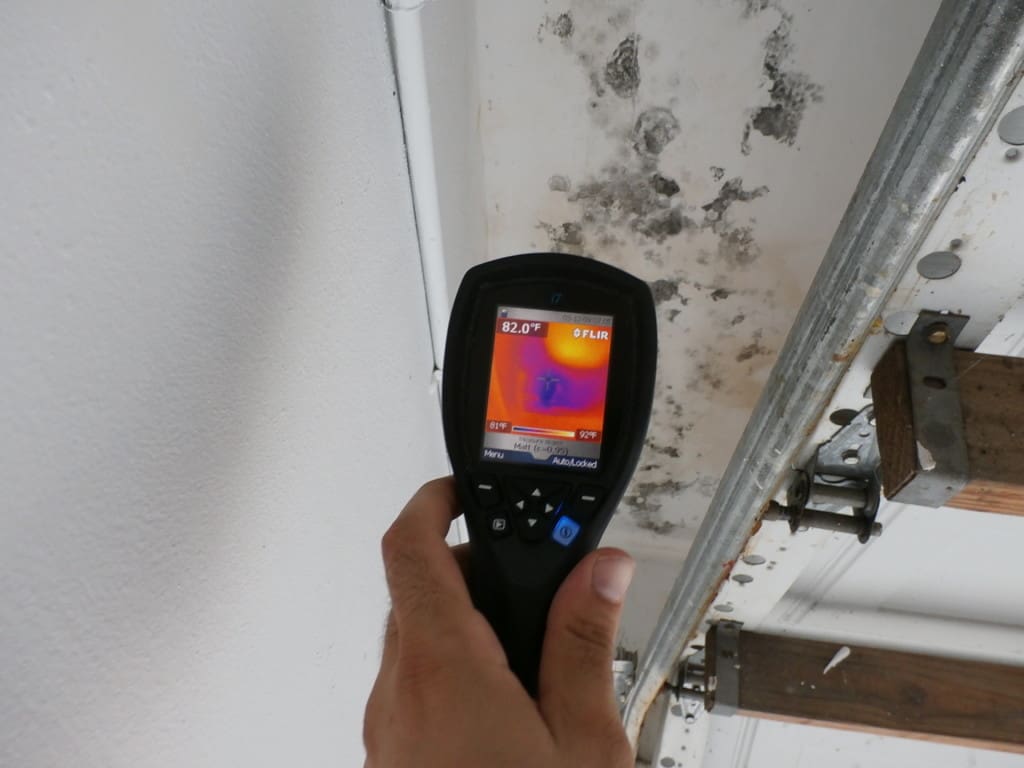A Guide To Detecting Mold in Your Home
Let's talk about something important: finding mold in your home. Mold is like sneaky, quiet visitors that you might not see but can make you feel bad. Sometimes, it shows up as weird colors on walls, like greens, blacks, or browns. Other times, you might smell a funny, musty odor, telling you that mold might be around. But guess what? It's not just about what you can see or smell; mold likes to hang out where it's wet.
So, if your home had a water party, like leaks or floods, mold might join the fun. And that's not the best kind of party! Now, here comes the superhero duo: mold inspection and testing! If you want to know if mold is playing hide-and-seek in your home, you can call in these superhero friends. But if you feel like being a detective yourself, there are also testing kits that you can use. It's like sending a secret message to a lab to check if mold is having a party in your home.
Common Signs of Mold
Sometimes, our homes can hide a tricky visitor called mold. Mold comes in different colors, like green or black, and it can show up on walls or ceilings. You might also notice a funny smell, kind of like dirt. These are signs that mold might be around. When water comes into our homes, it can bring mold with it. So, if you ever have leaks or floods, it's like a signal for mold to come in.
Look closely in those places for any moldy friends. Mold likes to grow where it's a bit wet. Check your home for these signs, and if you're not sure, you can ask someone to do a mold inspection and testing. They have special tools to see if mold is hiding where we can't easily find it. It's important to catch mold early, so we can help our homes stay healthy and happy! Here is a complete guide on what are common signs of mold.
Visible Indicators
Mold can be different colors, like green or black, and it looks strange. Sometimes, you can also smell something funny, like an old basement or wet dirt. That smell could mean mold is hiding around. So, if you know about any water troubles, it's a good idea to check those places extra carefully. And guess what?
Mold can be sneaky; it likes to hide where we can't see it. So, you might need a special helper for this job—someone who knows about mold inspection and testing. They use cool tools and sometimes even a flashlight that shows things we can't see with our eyes.
Water Damage Connection
Mold likes to grow in wet spots. So, if you see a spot on the wall that looks weird or different colors, it might be mold saying, "Hello, I'm here!" Also, if there's a funny smell, like something old and musty, it could be mold hiding around. You can find mold hiding after the water has been where it shouldn't be. Sometimes, you might not see the mold right away.
You might need help from adults with something called mold inspection and testing. It's like a detective job for your home. A mold inspector checks if mold is hiding where you can't see it. They might even use a special light to find a mold that's playing hide-and-seek in the walls or floors. Testing kits are like mold detectives, too. They take little samples to see if mold is around, helping you keep your home healthy and happy.
Environmental Factors
Detecting mold in your home is like being a mold detective. Mold loves damp places, so first, let's talk about the air in your house. Air has something called humidity, which is like the amount of water in the air. Mold grows faster when the air is too wet. So, it's important to check if your home has too much humidity. You can use a special tool called a hygrometer to measure it.
If the humidity is too high, you might need to use things like fans or dehumidifiers to keep the air dry. This is called condensation. Mold likes to show up where there's condensation. So, it's good to wipe away those water droplets. And that's why a mold inspection is like playing detective to keep your home healthy and happy!
Humidity Levels
Humidity is like the amount of water in the air. Imagine you're outside on a hot, sticky day; that's high humidity. Inside our homes, humidity is important. Mold likes humid places. So, keep the humidity between 30 and 50 percent. How do you know? Use a tool called a hygrometer. It's like a humidity detective! If the humidity is too high, mold might come to visit. Sometimes, after rain or a leak, homes can get wet. This is where mold might start a little party.
To stop this, we need to check for wet places. Look for wet spots or water stains on walls and ceilings. If you find them, it's like a sign saying, Mold might be here! If you see these signs or smell something strange, it might be time for a mold inspection. A mold inspection is like having a special detective look for mold in your home. They know where to look, even in hidden places! That way, we can keep our homes happy and healthy. Here is a comprehensive guide to enhancing air quality.
Health Indicators
When it comes to mold in your home, your health can give you some clues. If you start sneezing a lot, coughing, or your skin feels funny, it might be because of mold. Mold is like tiny, invisible bugs, and they can make your body feel bad. Sometimes, if your home has mold, your body tries to tell you by making you feel a bit yucky. If you notice these things happening more when you're inside, it's a good idea to ask someone to do a mold inspection. That means they check your home to find where the mold is hiding. It's important to find and fix the mold so that you can feel better and be healthy in your home.
Inspection Methods
If you think there might be mold in your home, you can do something called a mold inspection to find it. They might use special tools and wear masks to stay safe. There are also kits you can buy at the store for a mold inspection. These kits have simple instructions. Another way to find mold is by using a flashlight that shows things in a different light, called UV light. It helps find a mold that's hard to see with regular eyes. These are cool ways to figure out if mold is making a home in your house!
Professional Inspections
These experts do something called professional mold testing. They use special tools and look in places we might not see to find where the mold is hiding. It's like having a mold detective help you! They check for colors that don't belong on walls or in places that might be wet. Sometimes, they even use a special light that helps them see mold that our eyes can't catch. It's important to let them do their job so they can help make your home a healthy and happy place.

Action Steps and Remediation
If you find mold in your home, it's important to take action quickly. Mold can make people sick, so we want to get rid of it. First, try to find where the mold is hiding. Look at walls or ceilings, especially in places with water leaks or flooding. Mold can be in different colors, like green, black, or brown. If you smell something weird, like a musty or earthy smell, that could be mold too. Once you find mold, don't worry!
You can clean up a little bit yourself. Use soap and water, and make sure to dry the area completely. If the mold is a big problem, ask a grownup for help. Sometimes, you might need special people, like mold remediation Indiana, to help fix it. They know how to make your home healthy again. Remember, if you see mold, tell a grownup so they can help you take care of it.
Identifying and Addressing Household Mold
Finding mold in your house is like spotting an unwanted visitor. It's not always easy to see, but there are signs. Look out for weird colors on walls and sniff for a musty smell. Mold loves wet places, so check where there might be leaks or water troubles. If someone in your home is sneezing or coughing a lot, mold might be the reason.
To deal with mold, you can do some things yourself, like cleaning small areas. But for bigger mold parties, it's smart to call experts like those in mold remediation in Indiana. They know how to make your home a happy, healthy place again!


